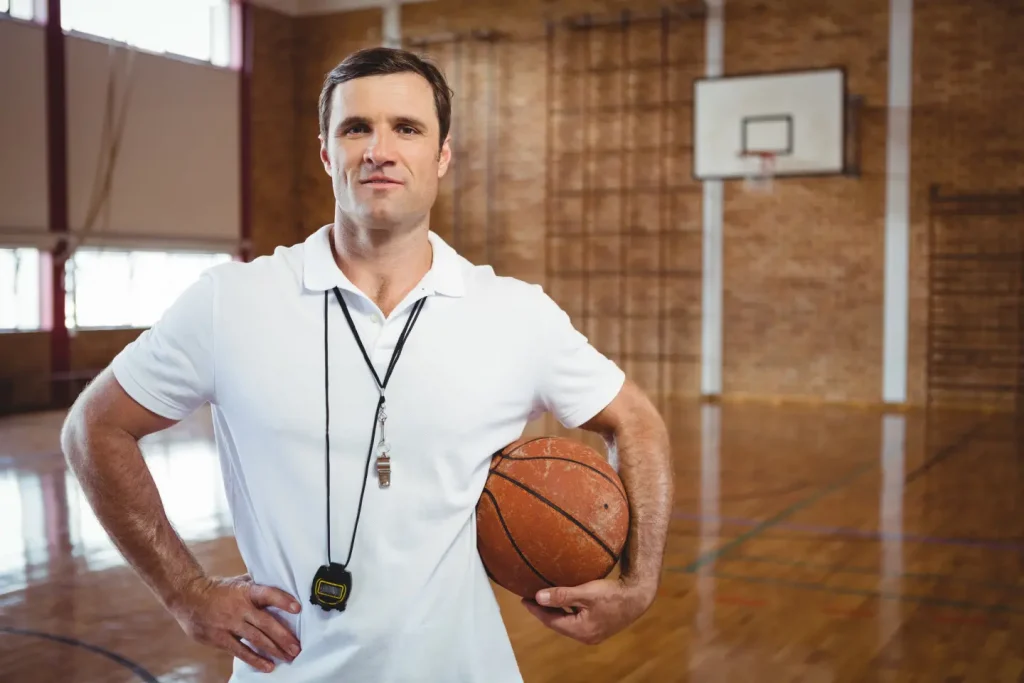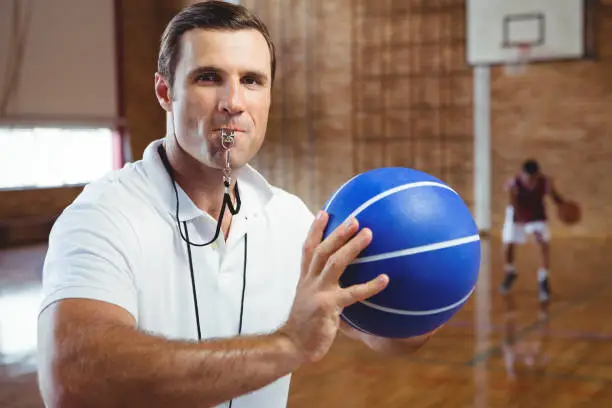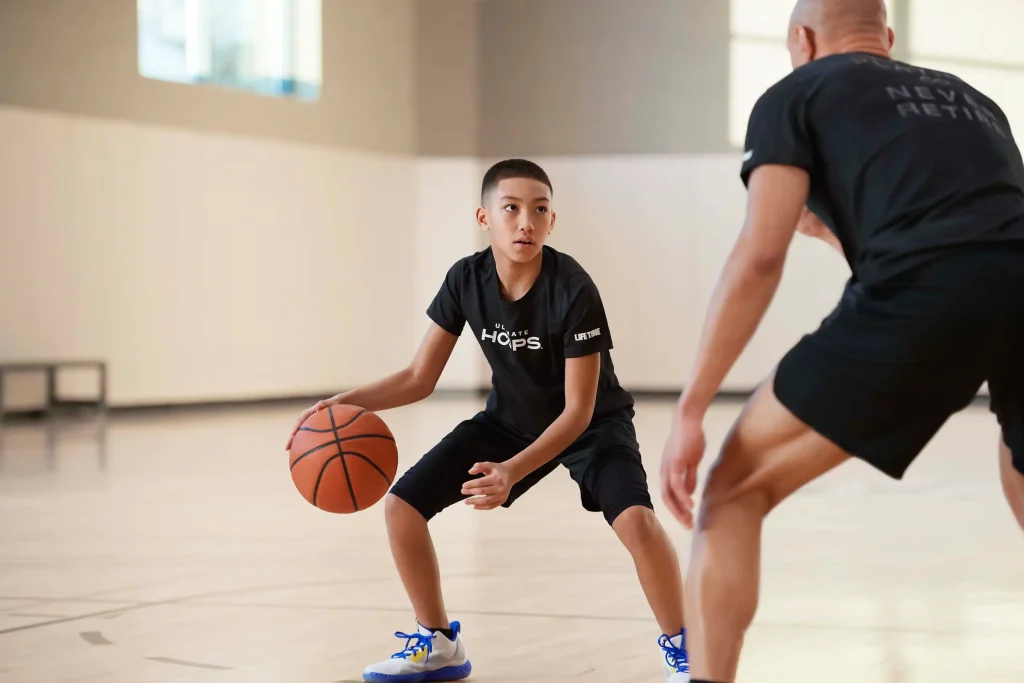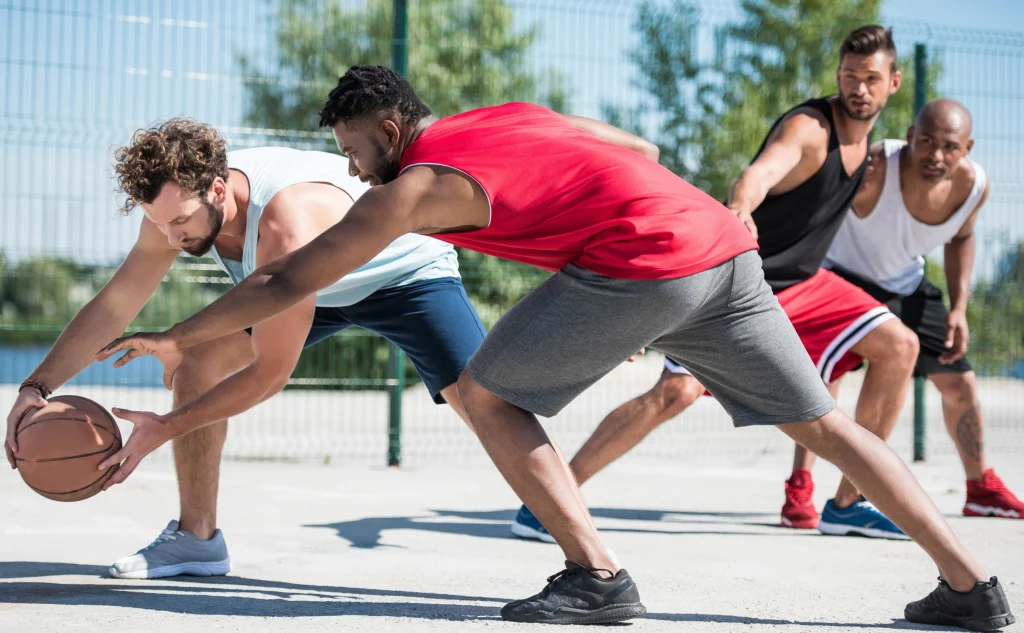Are you passionate about basketball and want to pass on your knowledge to the next generation? Becoming a basketball coach requires more than just technical skills, it also requires tactical thinking, leadership, and dedication to the game. In this article, we will guide you through the process of becoming a basketball coach, from the first steps to building a professional career. Discover the path to turning your passion into reality!

1. Studying the Game
Mastering basketball coaching demands total immersion in the game. Dive headfirst into countless NBA and college matchups, scrutinizing pivotal decisions made by coaches in clutch moments. Analyze offensive and defensive strategies meticulously, from fast breaks covering 94 feet (28.65 meters) to half-court sets. Invest in a top-notch playboard to craft game-changing plays.
Study film religiously, breaking down X’s and O’s like a seasoned tactician. Dissect pick-and-roll variations, zone defenses, and transition offense. Understand player positioning, spacing, and timing across the 4,700 square feet (436.64 square meters) of hardwood.
Embrace basketball analytics, leveraging advanced metrics like Player Efficiency Rating (PER) and True Shooting Percentage (TS%). Blend old-school fundamentals with cutting-edge strategies to create a unique coaching philosophy.
Network relentlessly with seasoned coaches, attend clinics and absorb knowledge like a sponge. Develop a keen eye for talent evaluation, from raw athleticism to basketball IQ. Master the art of in-game adjustments, timeout management, and player motivation.
Cultivate leadership skills, fostering team chemistry both on and off the court. Hone your communication abilities to effectively convey complex strategies to players of all skill levels. Remember, great coaches are lifelong students of the game, always evolving and adapting to new trends and techniques.
Watch a lot of basketball to familiarize yourself with the game

To become a top-notch basketball coach, immerse yourself in the game. Watch countless matches across all levels – from high school hoops to the NBA. This intensive viewing will sharpen your court sense and tactical acumen.
Don’t just spectate; analyze. Scrutinize player movements, both on and off the ball. Observe how teams cover the ground (in yards and meters) and adjust their game plan. Pay attention to coaches’ timeout usage, substitution patterns, and sideline communication.
Broaden your hoops horizon. Don’t stick to your favorite squads. Study a wide range of teams to expand your basketball IQ. Record games to dissect key plays later – this habit will hone your critical eye for the sport’s nuances.
Tune into expert commentary. Seasoned analysts offer valuable insights into strategy and decision-making. Their input can fast-track your learning curve.
By consistently watching and breaking down games, you’ll build a rock-solid foundation of basketball knowledge. This expertise will be your slam dunk as a coach.
Remember: In basketball, as in life, knowledge is power. The more you learn, the more you earn – in respect, results, and victories.
Note any important decisions coaches make during games.
Coaches make game-changing calls in split seconds. Watch hoops games closely to catch these pivotal moments. Spot when they call timeouts, swap players, or switch up defense. These choices can flip the script.
See how coaches handle foul trouble, player fatigue, and opponent tactics. Look for patterns in their choices. Who do they trust when it’s crunch time? How do they respond to scoring runs? Watch the plays they draw up during breaks and how well the team executes them on the court.
Don’t just study winning coaches. Learn from mistakes too. Analyze backfired decisions and figure out why. Think about how you’d handle it differently. By examining these in-game calls, you’ll grasp game management and strategy better. These skills are crucial for aspiring basketball coaches.
Keep a notepad handy. Jot down observations and insights. Use both feet and meters to measure court distances. Remember, a regulation NBA court is 94 feet (28.65 meters) long and 50 feet (15.24 meters) wide.
Pay attention to the coach’s body language and communication style. Do they yell instructions from the sideline or stay calm? How do they interact with refs and players during heated moments?
Consider the impact of home-court advantage, which can influence a coach’s decisions. In the NBA, home teams win about 60% of games.
Analyze how coaches use analytics and real-time data to inform their choices. Many teams now employ advanced stats experts on the bench.
Watch for innovative strategies or unconventional lineups. Bold coaches often try new approaches to gain an edge.
Remember, coaching decisions aren’t made in a vacuum. Factor in team chemistry, player injuries, and league rules when evaluating choices.
Research different offensive and defensive strategies

Mastering offensive and defensive strategies is crucial for aspiring basketball coaches. Study various offensive systems:
1. Pick-and-roll
2. Motion offense
3. Fast break
Each system has unique strengths and weaknesses. Learn when to deploy them effectively.
On defense, focus on:
1. Man-to-man
2. Zone
3. Press defenses
Adapt these strategies based on your team’s capabilities and opponents’ vulnerabilities.
Explore historical tactics too. Analyze legendary coaches’ approaches:
– Phil Jackson’s triangle offense
– Dean Smith’s four corners
These insights will shape your coaching philosophy.
Utilize diverse resources:
– Online platforms
– Coaching clinics
– Strategy books
– Game films (high school to NBA)
Observe how coaches adjust mid-game. This adaptability is key.
Remember, the court is 94 feet (28.65 meters) long. Players sprint these distances repeatedly. Conditioning is vital.
Buy a specialized clipboard to design your own plays.
Elevate your game strategy with a specialized basketball clipboard. These robust tools, designed for coaches, feature court diagrams and dry-erase surfaces. They’re invaluable for sketching plays, demonstrating positions, and making swift adjustments.
Choose a clipboard with a full-court diagram (94 feet or 28.65 meters) on one side and a half-court view (47 feet or 14.33 meters) on the other. This versatility optimizes both offensive and defensive planning. Look for a durable model that can handle courtside action. Some clipboards offer extra perks like marker storage or play card compartments.
With your clipboard in hand, dive into play design. Use color-coded markers to represent players, the ball, and movement paths. Practice quick, clear sketches for timeout situations. Your clipboard isn’t just for game day; it’s a crucial tool for ongoing preparation and learning.
This tactile approach to visual planning transforms abstract ideas into concrete strategies. It bridges the gap between mental concepts and physical execution, allowing you to communicate complex plays effectively. The clipboard becomes an extension of your coaching vision, helping players visualize and internalize game plans.
Remember, great coaches adapt. Your clipboard is a canvas for innovation. Experiment with unconventional formations, create hybrid plays or develop situational strategies. Let it spark creativity and push the boundaries of traditional basketball tactics.
Embrace this tool as part of your coaching arsenal. It’s not just about X’s and O’s; it’s about creating a shared language with your team. When players see your ideas come to life on the clipboard, it strengthens their understanding and buy-in to your system.
In the fast-paced world of basketball, where split-second decisions can change the game, your clipboard is a constant. It’s a touchstone for your team, a focal point during huddles, and a testament to your preparation and strategic thinking.
2. Finding a Coaching Position

After mastering the game’s intricacies, it’s time to hustle for a coaching gig. Be proactive and tenacious in your quest. Explore diverse avenues:
1. Volunteer at local clubs (within a 10-mile or 16-kilometer radius)
2. Scour online job boards for openings
3. Network with community sports organizations
Strategies for Landing a Coaching Role:
• Tailor your resume to highlight relevant skills and experience
• Craft a compelling cover letter that showcases your passion
• Attend coaching clinics and workshops to expand your knowledge
• Build a robust online presence through social media and coaching forums
• Consider obtaining coaching certifications to boost credibility
Remember, persistence is key. Start small if necessary, even if it means coaching a youth team or assisting a more experienced coach. These stepping stones can lead to bigger opportunities down the line.
As you navigate the coaching landscape, stay adaptable. The sports world is ever-changing, covering vast distances from grassroots to professional levels. Your journey might take you across states or even countries, so be prepared for potential relocations.
Leverage your unique strengths and experiences to stand out in a competitive field. Whether it’s innovative training techniques or a knack for player development, emphasize what sets you apart.
Be willing to volunteer for potential openings
Volunteer to score coaching opportunities. Offer your skills gratis to showcase dedication and gain invaluable experience.
Connect with local schools, community centers, and youth sports organizations within a 10-mile (16-kilometer) radius. Express your eagerness to assist as a coach or help with practices and games.
Expand beyond basketball-specific roles. Pitch in with admin tasks, equipment management, or game-day ops. These gigs provide crucial insights into program mechanics and foster relationships with key decision-makers.
Be proactive: ask to observe practices or attend team huddles to grasp coaching philosophies and game plans.
During off-season, lend a hand at basketball camps or clinics. These events often need extra staff and offer networking chances with coaches and program directors.
Maintain a can-do attitude and suggest innovative ideas when appropriate. Keep meticulous records of your volunteer work, including developed skills and positive outcomes. This documentation will be gold when applying for paid coaching positions.
To maximize your chances:
1. Be versatile: Offer help in various capacities.
2. Network: Build relationships with coaches and administrators.
3. Learn constantly: Absorb knowledge from experienced mentors.
4. Show initiative: Propose fresh ideas and solutions.
5. Document progress: Track your growth and achievements.
Look for coaching vacancies online.
Discover coaching vacancies online with these savvy strategies:
1. Scour job boards:
– Indeed, ZipRecruiter, LinkedIn
– Sport-specific sites: CoachingSearch.com, FootballScoop.com
2. Set up job alerts for instant notifications.
3. Check local institutions:
– School districts (within a 50-mile or 80-kilometer radius)
– Colleges and universities
4. Leverage social media:
– Twitter, Facebook
– Follow teams and organizations
5. Join coaching communities:
– Online forums
– Networking platforms
6. Create profiles on specialized sites:
– CoachUp
– TeamSnap
7. Monitor official sources:
– State athletic associations
– National coaching organizations
8. Use semantic search techniques:
– Include related terms like ‘athletic director’ or ‘sports management’
– Explore hypernyms (e.g., ‘sports leadership’) and hyponyms (e.g., ‘assistant coach’)
9. Expand your search radius:
– Consider opportunities within a 100-mile (160-kilometer) range
10. Utilize advanced search operators:
– Use quotation marks for exact phrases
– Employ Boolean operators (AND, OR, NOT)
11. Explore niche markets:
– Youth leagues
– Amateur athletic unions (AAU)
– Recreational centers
12. Stay informed about industry trends:
– Follow sports news outlets
– Subscribe to coaching newsletters
Ask your local recreation center or school if they need a coach

Don’t just surf the web for coaching gigs. Hit the pavement in your neighborhood. Local spots often need basketball coaches but don’t always post online.
Make a list of nearby rec centers, YMCAs, and schools within a 5-mile (8-kilometer) radius. Call or email their athletic directors. Tell ’em you’re keen to coach hoops and ask about openings. Even if they’re full up now, they might keep you in mind for later.
No luck? Don’t sweat it. Volunteer as an assistant or help with youth clinics. You’ll gain experience and build connections. This hands-on work can lead to paid coaching jobs down the road.
Stay persistent and network like crazy. Keep in touch with local sports organizations. Your dream coaching job might be just around the corner.
Remember:
– Local connections trump online searches
– Reach out to rec centers, schools, and community groups
– Introduce yourself and explain your coaching passion
– Volunteer to gain experience and build relationships
– Persistence and networking are key to landing coaching gigs
Keep looking for new opportunities and don’t get discouraged
Pushing through setbacks in your hoops coaching quest? Stay resilient – tenacity is crucial for snagging your ideal basketball mentoring role. Keep your radar on for fresh chances, even if they’re not exactly what you envisioned. Regularly scan job listings, sports platforms, and local community boards for coaching openings. Build connections with fellow coaches, players, and sports pros to stay in the loop about potential gigs.
Broaden your horizons to include assistant roles, youth leagues, or volunteer positions. These opportunities can provide invaluable experience and help you forge connections in the basketball world. Don’t overlook lower-tier teams or less competitive circuits; every coaching chance is a stepping stone to growth and showcasing your skills.
Maintain a positive outlook and use rejections as learning moments. Seek feedback when possible and leverage it to enhance your coaching abilities and application materials. Keep honing your basketball acumen through clinics, workshops, and online resources. Remember, many successful coaches started at the grassroots level and climbed the ladder. Your persistence and dedication will bear fruit, so keep driving forward and stay committed to your goal of becoming a basketball coach.
Imagine covering the length of a basketball court (94 feet or 28.65 meters) repeatedly. Just as a player would run countless drills to improve, you’ll need to cover metaphorical miles (or kilometers) in your coaching journey. It’s not about the distance, but the steps you take and the progress you make.
In the world of hoops, every inch counts. Whether you’re strategizing plays or developing players, precision matters. Your coaching journey might feel like a marathon (26.2 miles or 42.2 kilometers), but remember that even the longest games are won one possession at a time.
Stay focused on your endgame, but don’t forget to enjoy the process. The path to coaching success isn’t always a straight line – it might’ve more twists and turns than a point guard weaving through defense. Embrace the challenges, learn from setbacks, and keep pushing forward. Your coaching dream is within reach, so lace up and get ready to make your mark on the hardwood.
3. Working with Players

Winning coaches connect with players. Clear talk, respect, and trust build strong bonds. Set rules early and stick to them. Tailor your approach to each player’s unique needs.
Develop skills through focused practice. Break down complex moves into bite-sized steps. Give constructive feedback. Encourage personal goal-setting and progress tracking. Use praise to boost confidence, but address weaknesses head-on.
Create a team-first culture. Promote teamwork and good sportsmanship. Organize bonding activities. Teach mental toughness and resilience to handle pressure and setbacks.
Stay cool during games. Give clear, brief instructions. Use timeouts wisely for strategy and motivation. Make tough calls on substitutions and tactics as needed.
After games, analyze performance thoroughly. Celebrate wins and learn from losses together. Push players to reflect and set new goals.
Key metrics:
– Practice time: 2-3 hours (120-180 minutes) daily
– Game duration: 48 minutes (NBA), 40 minutes (NCAA)
– Court size: 94 feet x 50 feet (28.65 m x 15.24 m)
– Three-point line: 23 feet 9 inches (7.24 m) from basket center
This approach fosters a holistic basketball program, balancing individual growth with team success. It encompasses physical training, mental preparation, and tactical acumen, creating a comprehensive framework for player and team development.
Conclusion
You’re equipped to kick off your basketball coaching career. This journey demands continuous growth. Stay fired up, devour game knowledge, and relentlessly sharpen your skills. As you rack up experience, you’ll forge your unique coaching style and philosophy. Be patient with yourself and your players, always striving to unleash your team’s full potential.
With unwavering dedication and hard work, you’ll evolve into a top-notch coach, guiding your team to victory on and off the court.
